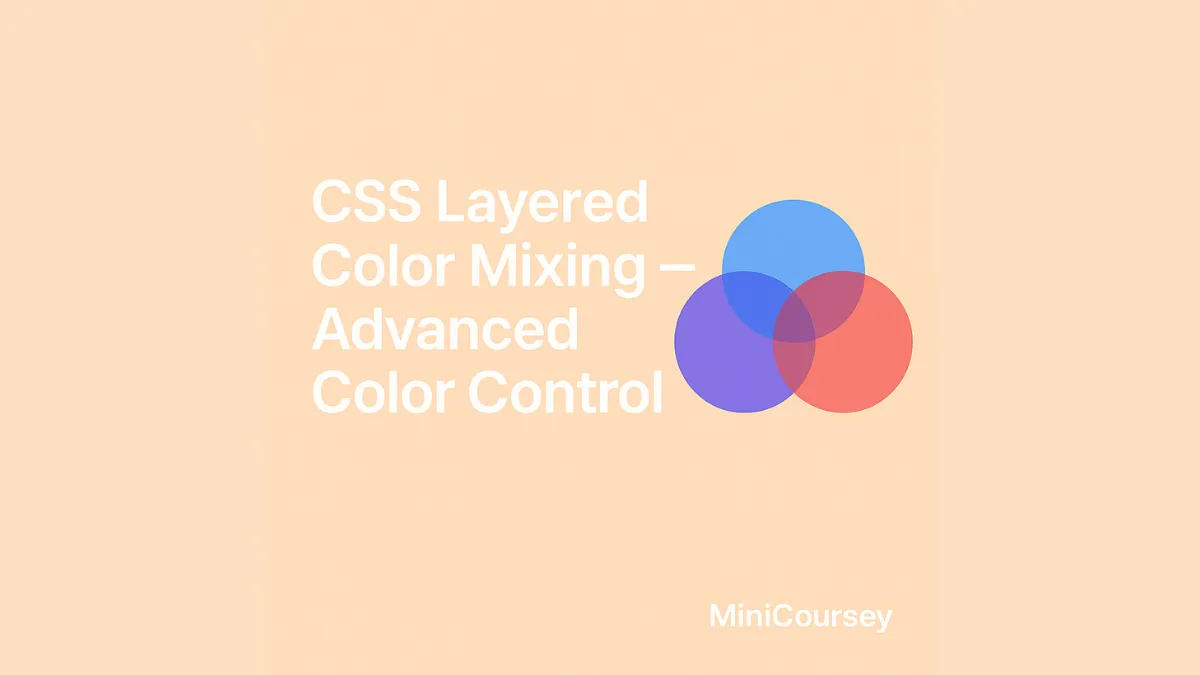Ready to level up your CSS colors? Layered color mixing combines modern tools like color-mix(), Relative Color Syntax, and Cascade Layers to create sophisticated, reusable palettes. This approach lets you adjust tints, shades, or themes dynamically — right in CSS, no preprocessors required. In this MiniCoursey quick guide, you’ll learn how to layer color tools together for advanced control and maintainable design systems.
Why Layer Color Tools?
Each new CSS color tool solves different problems. Use them together for smarter, DRY, theme-friendly colors that adapt to your design needs.
Practical Example
Use a base color, adjust it with Relative Color Syntax, then blend with color-mix() for a final layer.
:root {
–brand: rgb(0 120 255);
}
.button {
/* Make brand 80% transparent */
–brand-soft: rgb(from var(–brand) r g b / 80%);
/* Blend with white for a lighter tint */
background: color-mix(in srgb, var(–brand-soft) 70%, white 30%);
}
In this example, you adjust the opacity with Relative Color Syntax, then blend with color-mix() to get a new layered result.
How Cascade Layers Help
Use @layer to organize color overrides. For example, base theme colors in one layer, dark mode tweaks in another. The cascade handles which one wins!
💡 Pro Tip: Combine Relative Color Syntax with custom properties and layers for flexible themes.
⚠️ Common Mistake: Keep your layered color rules readable — overusing them can get confusing fast!
FAQ
Q: Do I need a preprocessor for this?
A: Nope! All modern browsers now support color-mix() and Relative Color Syntax is rolling out fast.
Q: Can I use layers for more than colors?
A: Absolutely — layers help you control all your CSS specificity and overrides too.
Related Link
👉 Check out previous: CSS Color-Mix() — Blend Colors Directly in CSS
Where to Learn More
Check MDN’s docs for color-mix(), Relative Color Syntax, and Cascade Layers to practice layering modern CSS features together.
Conclusion
Congrats — you now know how to use layered color mixing for advanced, flexible, theme-ready color systems in CSS!
✨ Bookmark MiniCoursey for more quick & free mini courses!


1 thought on “CSS Layered Color Mixing — Advanced Color Control”